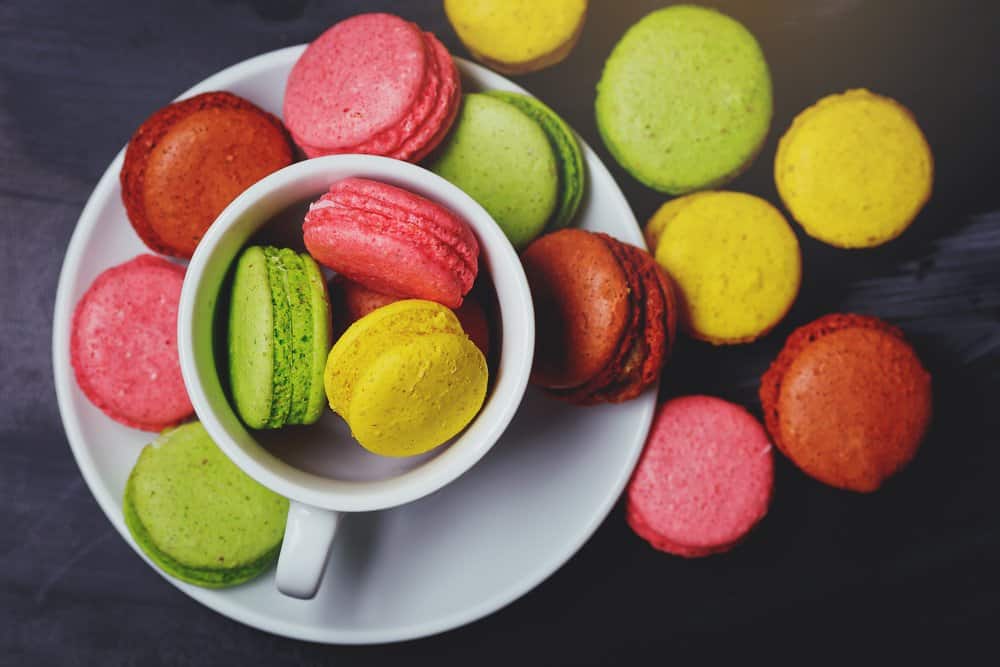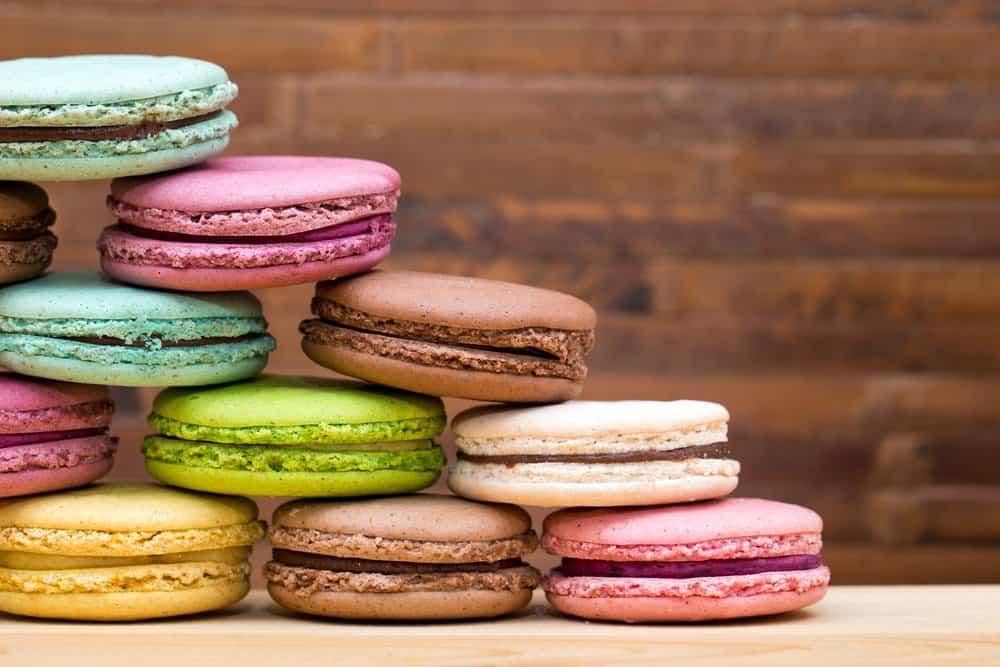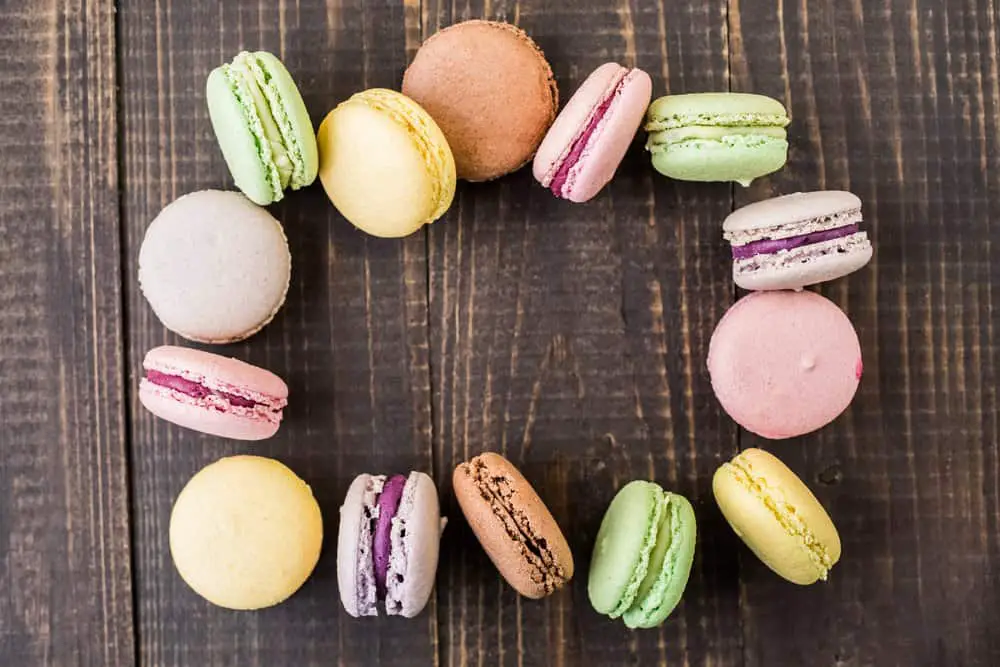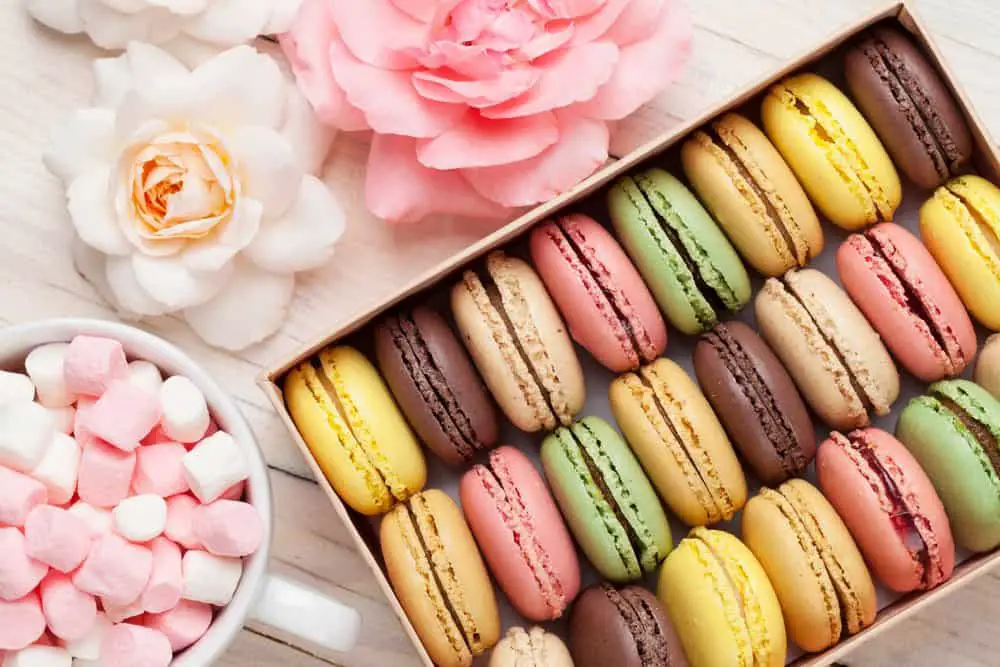Let’s talk about confections; these are sweet based delicacies or dishes and our primary focus for today are the macarons. Please don’t lose your interest just yet! We know how these little round things can put us under the cosh sometimes, but there is always a way around it especially when you have the right information.
Cookies like macarons have made it to the top list of children’s favourites so as a food lover or chef, you should have a good knowledge of it and how to present a classical homemade macaron.
Macarons could present themselves as somewhat confusing regarding what to tag as a ‘perfect macaron.’ It takes a lot of understanding and some preparations and getting used to before you can attain the right level of macaron excellence, but that was then!
These days with an article like this to tell you all you need to know, you can sit back and find out the right way your macaron should taste and know all that goes into those round, attractive, colorful sweetness at a go.
What are Macarons?

A macron is an almond based cookie of French decent. Macarons usually start up with the making of meringue which is a mixture of egg white and sugar commonly used as the basis of a lot of French and Swedish confections.
Macarons can be made into different flavours and mostly have fillings in it ranging from jam to cream. They come in a lot of colourful forms thanks to the food colouring added to it.
Macarons are famous around the world, especially in Paris. They are known for their roundness, and they are chewy and crunchy together inside and out.
The word ‘macaron’ comes from the Italian word ‘maccherone’ or ‘macaroni,’ yes! I know you see the link there. It means ‘dough of fine quality.’
Who Started These Macarons?

Macaron has a diversified amount of tales about how and who started it. One story has it that in the middle ages, a chef in the name of Catherine de’ Medici introduced macaron to France which she had learned and mastered in Italy.
She made them in monasteries during the period which she was married to Duc d’Orleans who was a king at that time. Another story has it that in the early 1700’s, two Carmelite nun sisters earned a living from making macarons and selling them to people in the neighbourhood.
From then on, macaron began to spread across the country and to other regions in France, the macarons made at that time were not the two cookies and a filling type as we have it now, this dimension of macarons making came about much later in the form of reinventions.
Are Macarons Different From Macaroons?
Although both the macaroon and the macaron have their names from the same origin and meaning, they are quite different in lots of ways.

A macaroon, unlike a macaron, is a coconut cookie; it is found and made predominantly within the United States where it is most popular.
In some cases, a macaroon can have nuts in it, but a macaron hardly has such inclusions. Macarons and macaroons are also very different in shape.
Because it is made up of shredded coconut, a macaroon has a somewhat irregular cylindrical shape, and it could be hard or chewy all through while a macaron has a distinct circular shape.
A macaroon takes relatively less time to make from start to finish while a macaron is more demanding and tasking.
If you still find it all confusing, have it at the back of your mind that a macaroon has no filling at all and a macaron has a meringue filling in its center, you can put things straight with that.
What Should A Macaron Taste Like?

A macaron can have different tastes depending on the flavor you eat, but even at that, there are some basic things that should be prominent in a well-made macaron.
The top of a macaron is smooth and well rounded, this exhibits just how much expertise the maker of the cookie wields. With a first bite, it should be chewy and soft without any air spaces in-between.
The cookie should be whole and not splinter into many pieces when bitten; this shows a major flaw in the mixing process.
A macaron should have a balance of sweetness, and all the other flavours in it, an excess of sugar is usually a common fault, and a let-off, the taste of a well-made macaron should be even and moderate both inside and out.
A Simple Macaron Recipe
This macaron recipe by Eat.Live.Travel.Write got it all for me because of the explained and detailed procedures she put out for people to follow and learn as well.
She also showed her past macaron mistakes which serve as an inspiration for you to take it on and get your own macaron game going. If she can get it done, you definitely can.
Take note of all the time intervals for each step, also ensure you carry out the whisking properly as that determines to a large extent what to expect.
If you would also like to watch a video on making a perfect macaron from scratch, follow this link
After All Said!
We know macarons take a lot of patience and practice, but it is worth it in the end if you ask me.
Think about it; a macaron fits into everything; a birthday party, an evening treat, a package for kids, just name it.
Mastering the making of macaron would pay off if not now, then in the nearest future. If you also haven’t had a try before, then the descriptions above should guide you towards what to expect.
If you take the bold step of trying out some recipes, please let me know. I would love to share in on your experience with macarons and what part you enjoyed the most. For a cookbook on more macaron recipes, click here.
